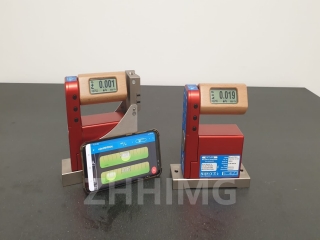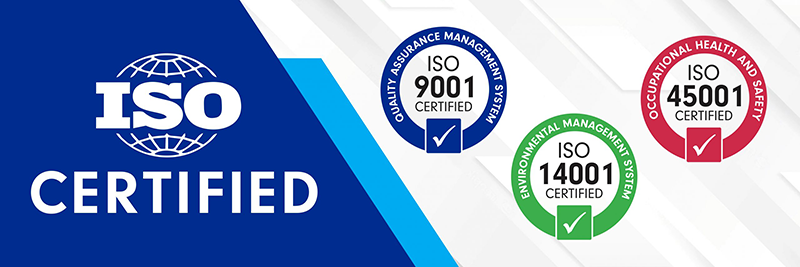In the field of precision measurement, granite straightedge, as a key tool to ensure the accuracy of equipment and measurement, its flatness grade directly affects the reliability of measurement results. The National Institute of Standards and Technology (NIST) certification of the United States is a globally recognized authoritative standard for high-precision measuring equipment, and AA-level flatness is one of the grades with extremely high precision requirements. As a leading brand in the industry, ZHHIMG, with its advanced technology and strict craftsmanship, helps users achieve NIST certification and AA-level flatness goals for granite straighteers. The following will provide you with a detailed analysis of the calibration key points and implementation paths.
1. Understand NIST certification and the AA-level flatness standard
NIST certification is renowned for its rigorous testing and evaluation processes, with its core objective being to ensure that measuring devices meet the world's leading accuracy standards. In the field of granite straightedge, the AA grade flatness requirement is extremely strict. Generally, it is stipulated that the flatness error within each meter length should be controlled within ±0.5μm. This standard puts forward extremely high requirements for the material properties, processing technology and calibration technology of the straightedge. The AA-level granite straightedge certified by NIST is not only a reliable guarantee for high-precision measurement, but also a powerful proof of the enterprise's technical strength and product quality.
Ii. The Quality Foundation of ZHHIMG granite straightedge
The ZHHIMG granite straightedge has laid a high-precision foundation from the material selection stage. Selected high-quality natural granite, with dense internal mineral crystallization and uniform structure, has a thermal expansion coefficient as low as 5-7 ×10⁻⁶/℃, and possesses natural stability and anti-deformation ability, providing an inherent advantage for achieving AA-level flatness. During the processing stage, ZHHIMG employs advanced techniques such as CNC grinding and polishing, combined with high-precision detection equipment like laser interferometers for real-time calibration, to ensure that the surface of the straighteer achieves extremely high initial accuracy during the processing, creating favorable conditions for subsequent calibration work.

Iii. Preparations Before Calibration
Before conducting NIST certification calibration, it is necessary to ensure that the straightedge is in the best condition. First of all, the surface of the straightedge should be deeply cleaned. Use a lint-free cloth and a special cleaner to remove oil stains, dust and other impurities on the surface to avoid impurities affecting the calibration accuracy. Secondly, place the straightedge in an environment with constant temperature and humidity for more than 24 hours to allow it to fully adapt to the environmental temperature and humidity, eliminating possible minor deformations caused by environmental changes. In addition, high-precision calibration tools such as laser interferometers and electronic levels need to be prepared. The accuracy of these tools directly affects the accuracy of the calibration results.
Iv. Calibration Process and Key Technologies
Rough calibration: Use an electronic level to make an initial measurement of the straightedge. Collect a measurement point at certain intervals (such as 100mm) to obtain the approximate contour data of the straightedge surface. Based on the measurement results, the surface of the straightedge was roughly machined through CNC grinding equipment to remove obvious high points, making the flatness initially approach the AA-level standard requirements.
Precision calibration: High-precision measurement is carried out using a laser interferometer, which can accurately detect the height changes on the surface of a straightedge at the micrometer level. Based on the data fed back by the interferometer, the surface of the straightedge was finely ground by combining manual grinding with CNC machining. During the grinding process, the grinding pressure and direction need to be constantly adjusted to gradually eliminate the flatness error, so that the surface flatness of the straightedge can reach a higher level.
Repeated verification and fine-tuning: After completing the fine calibration, use a laser interferometer and an electronic level to conduct a comprehensive inspection of the straightedge again to ensure that the flatness error of each measurement point is within the AA-level standard range. If minor errors are found in the local area, targeted fine-tuning should be carried out until the overall flatness of the straightedge fully meets the AA-level requirements of NIST certification.
V. NIST Certification Application and Review
After completing the calibration and confirming that the straightedge has achieved AA-level flatness, you can submit the certification application to NIST. During the application process, detailed technical parameters of the straightedge, processing technology descriptions, calibration records and other materials must be provided. NIST will dispatch professional reviewers to conduct on-site inspections and evaluations of the straightedge. The review will cover multiple aspects such as the flatness, thermal stability, and wear resistance of the straightedge. Only granite straightedge that has passed strict review can obtain NIST certification and become a benchmark product in the field of precision measurement.
By following the above-mentioned ZHHIMG granite straightedge calibration guidelines, enterprises and research institutions can achieve NIST certification and AA-level flatness goals more efficiently. Whether in industries with extremely high precision requirements such as mechanical manufacturing, aerospace, or electronic chips, the ZHHIMG granite straightedge certified by NIST will become a reliable partner in ensuring measurement accuracy and product quality, helping enterprises continuously break through in the field of precision measurement and move towards a future of higher precision.
Post time: May-13-2025

